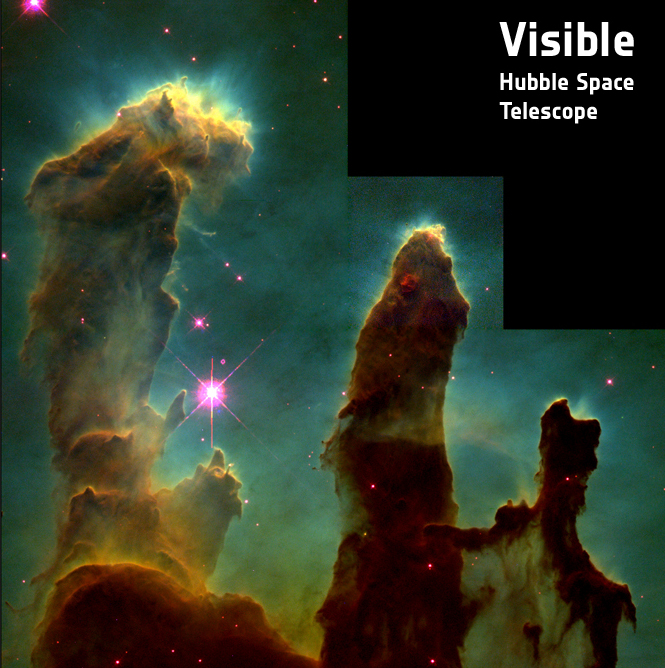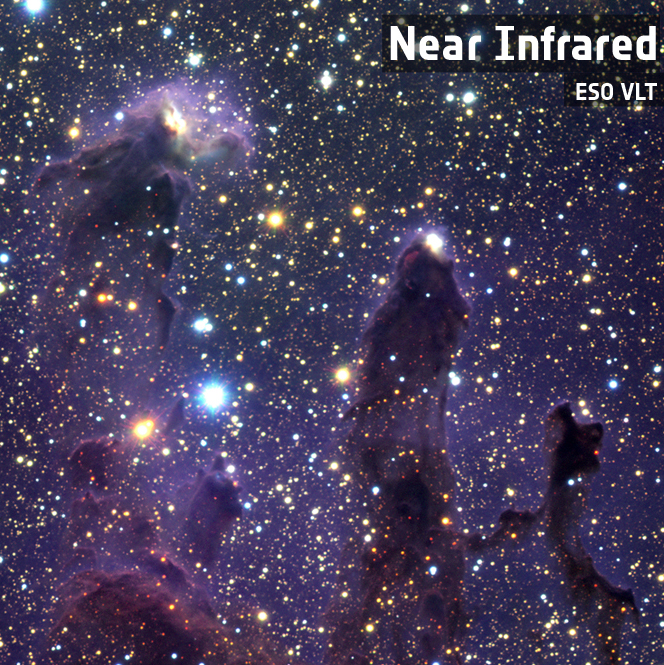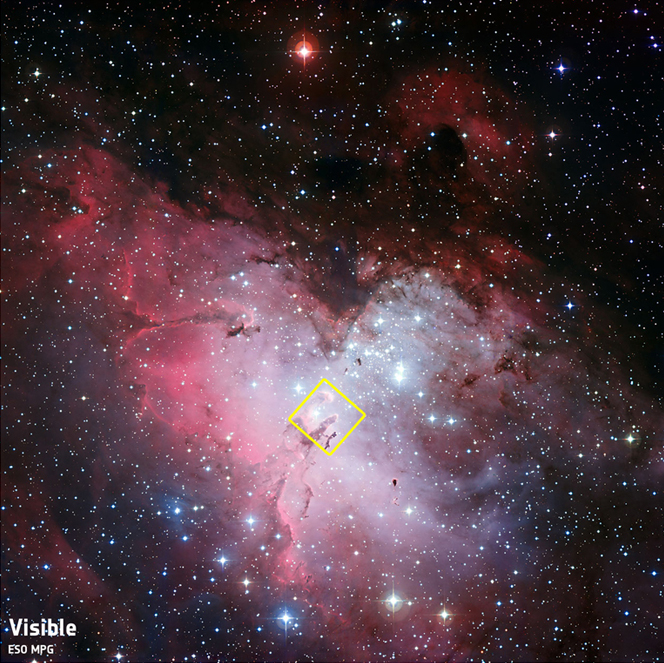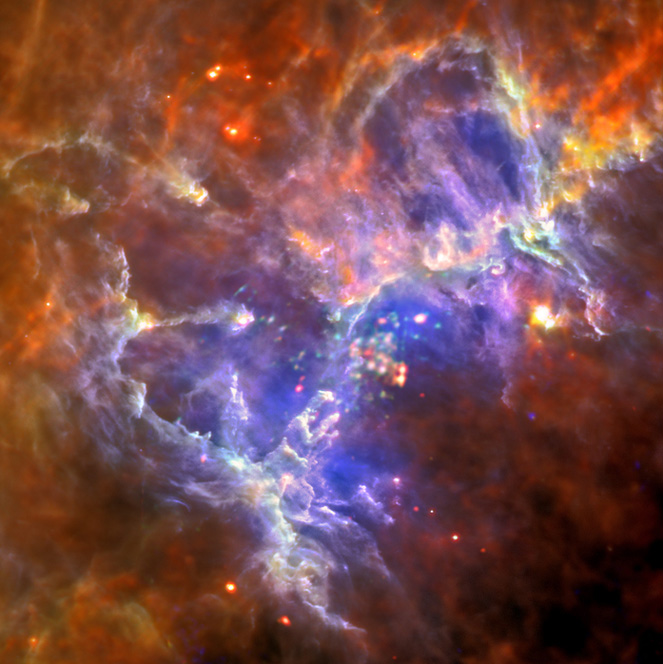M16, The Eagle Nebula
The image below shows a section of the Eagle Nebula which surrounds star cluster M16 (also designated NGC6611). It is in the constellation Serpens at about 6500 light years (2000 parsecs) from Earth. It is classified as an emission nebula. It consists predominantly of ionized hydrogen and is referred to as an H II region because of the emission spectrum of ionized hydrogen. The collection of hot, bright O and B stars at its center provide the ultraviolet ionizing radiation which causes the hydrogen to be luminous.

This is the 1995 image of the Eagle Nebula, taken by the Hubble Space Telescope. It was titled 'Pillars of Creation' and is one of the most famous astronomical images of the 20th Century. Taken in visible light using a combination of SII/H-alpha and OIII filters, it shows a part of the Eagle Nebula where new stars are forming. The tallest pillar is around 4 light-years high. Credits: NASA/ESA/STScI, Hester & Scowen (Arizona State University)

"The 8.2m-diameter VLT's ANTU telescope imaged the famous Pillars of Creation region and its surroundings in near-infrared using the ISAAC instrument. This enabled astronomers to penetrate the obscuring dust in their search to detect newly formed stars. The research into the 'evaporating gaseous globules' (EGGs), which were first detected in the Hubble images, needed the near-infrared capabilities and resolution of the VLT to peel back the layers of dust and detect the low-mass young stars cocooned within the EGG shells. The near-infrared results showed that 11 of the 73 EGGs detected possibly contained stars, and that the tips of the pillars contain stars and nebulosity not seen in the Hubble image."
References:
ESO/VLT

"This three-colour composite mosaic image of the Eagle Nebula (Messier 16, or NGC 6611) is based on images obtained with the Wide-Field Imager camera on the MPG/ESO 2.2-metre telescope at the La Silla Observatory. At the centre, the so-called "Pillars of Creation" can be seen. This wide-field image shows not only the central pillars, but also several others in the same star-forming region, as well as a huge number of stars in front of, in, or behind the Eagle Nebula. The cluster of bright stars to the upper right is NGC 6611, home to the massive and hot stars that illuminate the pillars. The "Spire" - another large pillar - is in the middle left of the image. This image is a composite of 3 filters in the visible range: B (blue), V (green) and R (red)."

The far-infrared image was made by the Herschel Infrared Observatory and the X-ray image was made by the XMM-Newton X-ray imaging instruments. The far-infrared images the cool gas and dust, just a few degrees above absolute zero. The X-ray image shows the hot young stars that are obscured by the dust in the visual and infrared images. Both the wavelength ranges used in this composite image would be blocked by the Earth's atmosphere.
References:
ESA images of M-16
Star concepts
Reference
Kaufmann
Ch. 2
| HyperPhysics***** Astrophysics | R Nave |